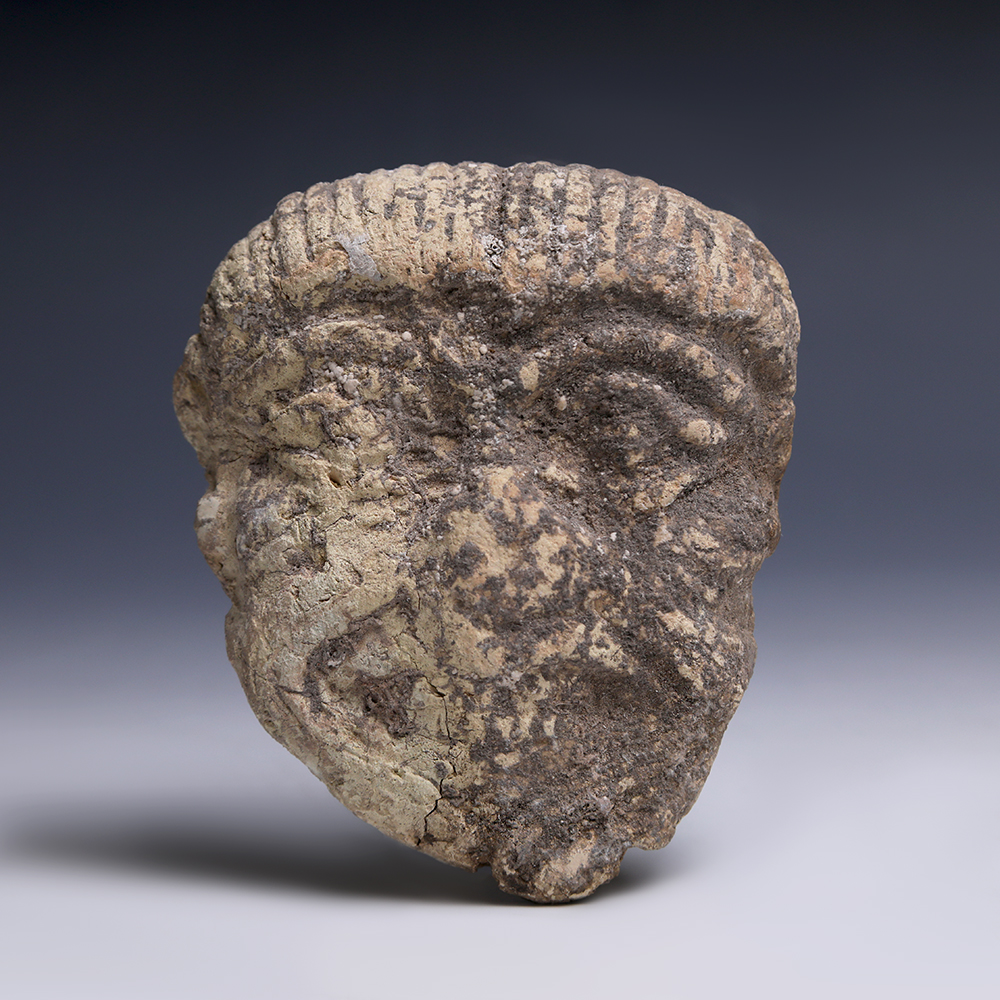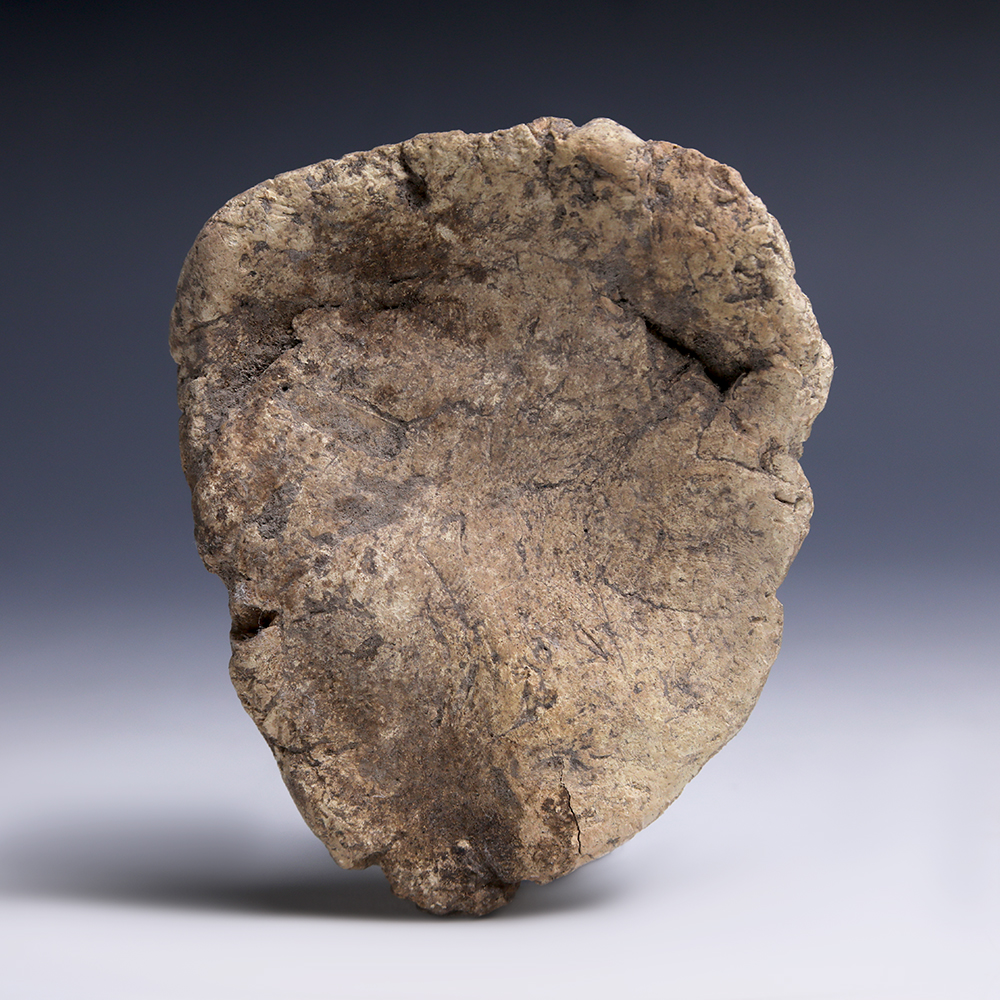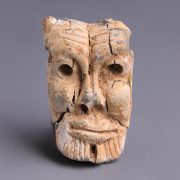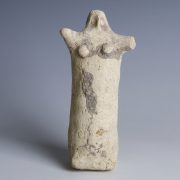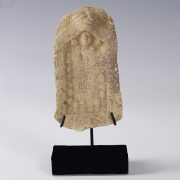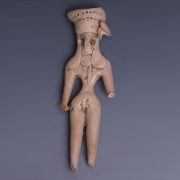Grimacing faces with deep furrows, as seen on this example, have been recovered in several Mesopotamian sites, however they seem to have disappeared after the fall of Babylon. Terracotta masks with similar attributes reappeared in Sparta as offerings to the sanctuary of Artemis Ortheia. The similarity between the figures suggests that the Mesopotamian plaques acted as a prototype for the Spartan masks. The figure depicted on Mesopotamian pieces has been identified as Humbaba, the demon slew in the story of Gilgamesh and the Land of the Living. Stories of the heroic king of Uruk appeared in Sumer around the 3rd Dynasty of Ur and formed the base for the epic of Gilgamesh, the first epic poem, written in Acadian during the Old Babylonian period.
Mesopotamian Earthenware Plaque of Humbaba
$734.87
A Mesopotamian earthenware relief-plaque depicting the grimacing face of male figure. He is portrayed with big eyes, large nose and lips pulled back in a wide grimace. Deep furrows mark his face, running down to and around his mouth; whilst evenly spaced parallel grooves spring from the low, arched hairline to indicate the hair. The back of the plaque remains unworked. Figures of this type appeared around the 1st Millennium BC in Mesopotamian iconography and are identified as Humbaba, a demon appearing in the Epic of Gilgamesh.
Provenance: Ex S.M. Collection, London, Mayfair, acquired 1970s-90s.
Condition: Good condition. A fine crack at the left side of the chin; signs of wear consistent with age.
In stock
| Weight | 123.8 g |
|---|---|
| Dimensions | W 7.8 x H 9 cm |
| Culture | |
| Region | |
| Pottery and Porcelain |
